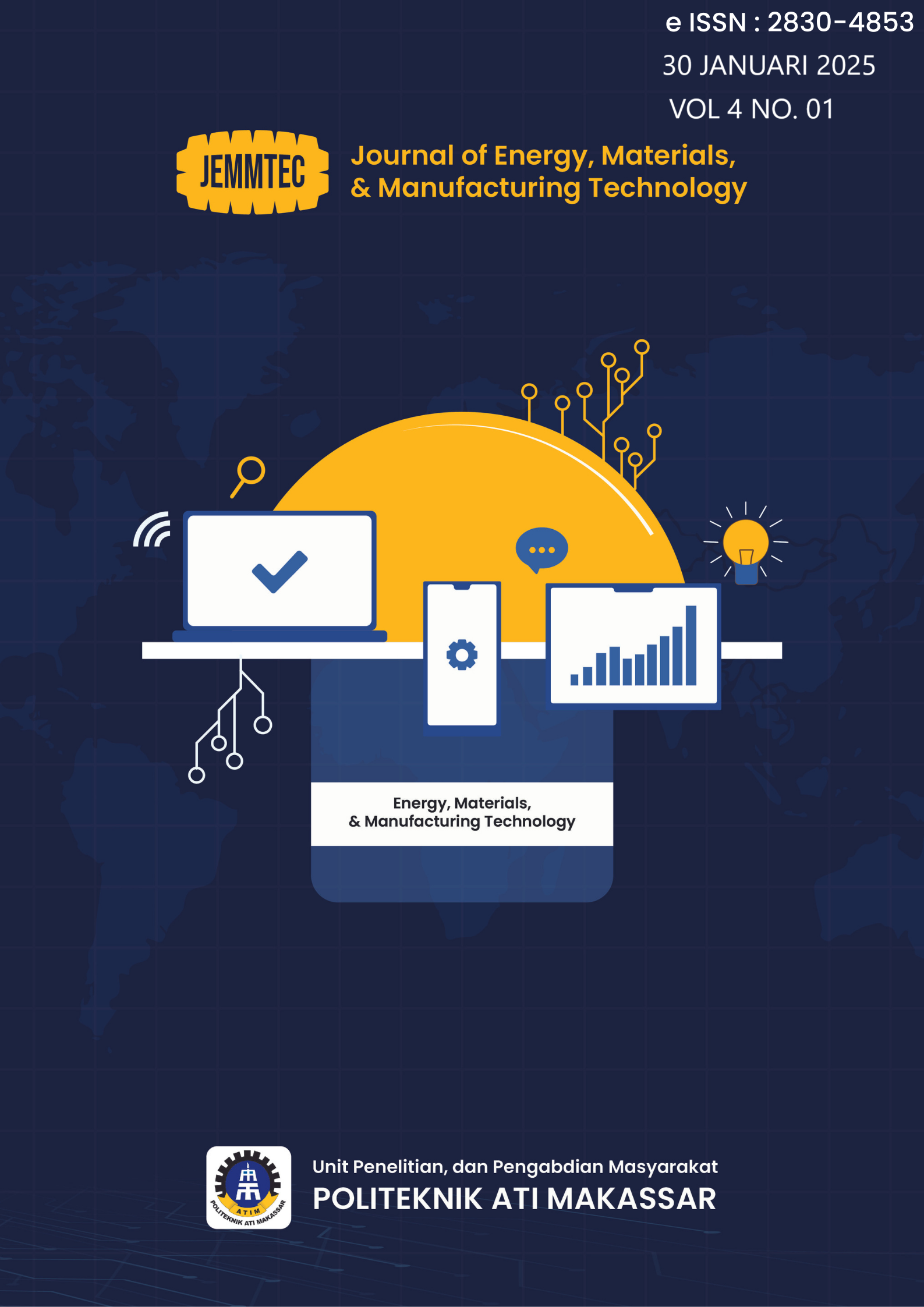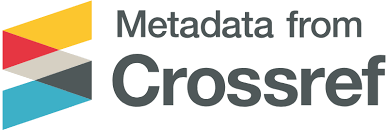Upaya Penurunan Cacat Kotor Pada Produk Tutup Kemasan Kosmetik Menggunakan Metode PDCA
DOI:
https://doi.org/10.61844/jemmtec.v4i01.987Keywords:
dirty defect, injection molding, mold, PDCAAbstract
Cosmetic packaging lids are among the products with the highest defect rate, especially for dirty defects, with a defect percentage of 4.2%, while the defect tolerance limit is only 2%. Dirty defects can be black spots or black scratches. Dirty defects are caused by lack of mold cleaning. Dirty defects can also be caused by leaks in the cooling channels and gas trapped in the mold. The Plan, Do, Check, Act (PDCA) quality control method used aims to find out how to maintain product quality. Quality products that meet the standards will be achieved if quality control is implemented properly. From a total sampling of 20,000 pcs, a total of 3,927 dirty defects were obtained. The handling action is to dismantle the entire mold to clean all areas of the mold and implement mold cleaning standards. After mold cleaning, it was shown that there was a decrease of 810 pcs dirty defects.
References
J. Gutberlet, “Waste in the City: Challenges and Opportunities for Urban Agglomerations,” Intech Open Sci., 2018, doi: 10.5772/intechopen.72047.
O. Madden, A. E. Charola, K. C. Cobb, and M. Brooks, The Age of Plastic: Ingenuity and Responsibility, no. 7. 2017.
Y. S. Khairnar, T. U. Dhanepkar, A. D. Deshmukh, A. V Deore, and P. R. Chhajed, “A review on design of plastic injection mould,” J. Mech. Civ. Eng., pp. 34–38, 2018, [Online]. Available: www.iosrjournals.org.
H. Widiastuti, S. E. Surbakti, F. Restu, M. H. Albana, and I. Saputra, “Identifikasi Cacat Produk Dan Kerusakan Mold Pada Proses Plastic Injection Molding,” J. Teknol. dan Ris. Terap., vol. 1, no. 2, pp. 76–80, 2019, doi: 10.30871/jatra.v1i2.1805.
H. Permana, Topan, and S. Anwar, “Produksi Proses Komponen Plastik Flip Flop Dengan Mesin Injeksi Molding Type Hidrolik,” J. Baut dan Manufaktur, vol. 03, no. 02, pp. 2686–5351, 2021.
M. S. D. Ellianto, P. B. Santoso, and A. A. Sonief, “Usulan Penerapan Lean Six Sigma, Fmea Dan Fuzzy Untuk Meningkatkan Kualitas Produk Botol Sabun Cair,” J. Eng. Manag. Industial Syst., vol. 3, no. 1, pp. 28–34, 2015, doi: 10.21776/ub.jemis.2015.003.01.5.
B. Basuki and S. Sunaryo, “Pengaruh Waktu Pengeringan Material Acrylonitrile Butadiene Styrene (Abs) Terhadap Cacat Bercak Pada Proses Injection Molding Plastik,” Suara Tek. J. Ilm., vol. 12, no. 1, p. 15, 2021, doi: 10.29406/stek.v12i1.2954.
A. Wahid, Nuriyanto, M. Munir, and A. Syarifuddin, “Identifikasi Cacat Produk Botol Plastik 500 mL Dengan Pendekatan Metode FTA (Fault Tree Analysis) di PT. X Pasuruan,” J. Ind. View, vol. 05, pp. 36–48, 2023.
A. Realyvásquez-Vargas, K. C. Arredondo-Soto, T. Carrillo-Gutiérrez, and G. Ravelo, “Applying the Plan-Do-Check-Act (PDCA) Cycle to Reduce The Defects in The Manufacturing Industry. A Case Study,” Appl. Sci., vol. 8, no. 11, 2018, doi: 10.3390/app8112181.
A. S. Silva, C. F. Medeiros, and R. K. Vieira, “Cleaner Production and PDCA Cycle: Practical application for reducing the Cans Loss Index in A Beverage Company,” J. Clean. Prod., vol. 150, pp. 324–338, 2017, doi: 10.1016/j.jclepro.2017.03.033.
R. Maruta, “Maximizing Knowledge Work Productivity: A Time Constrained and Activity Visualized PDCA Cycle,” Knowl. Process Manag., vol. 19, no. 4, 2013.
M. Sokovic, D. Pavletic, and K. K. Pipan, “Quality Improvement Methodologies – PDCA Cycle, RADAR Matrix, DMAIC and DFSS,” J. Achiev. Mater. Manuf. Eng., vol. 43, no. 1, pp. 476–483, 2010.
S. Isniah, H. Hardi Purba, and F. Debora, “Plan Do Check Action (PDCA) Method: Literature Review and Research Issues,” J. Sist. dan Manaj. Ind., vol. 4, no. 1, pp. 72–81, 2020, doi: 10.30656/jsmi.v4i1.2186.
L. C. Iswantoro and B. Rahardjo, “Perbaikan Sistem Sampling dan Peninjauan Kinerja QC Line Pada PT . X,” J. Titra, vol. 6, no. 2, pp. 131–136, 2018.
S. Patil, N. Phafat, and A. Keche, “Warpage Control in Set-Top Box Components via Optimization of Injection Molding Parameters Using Taguchi L8 Orthogonal Array and ANOVA,” J. Mines, Met. Fuels, vol. 72, no. 12, pp. 1383–1389, 2024, doi: 10.18311/jmmf/2024/46216.








